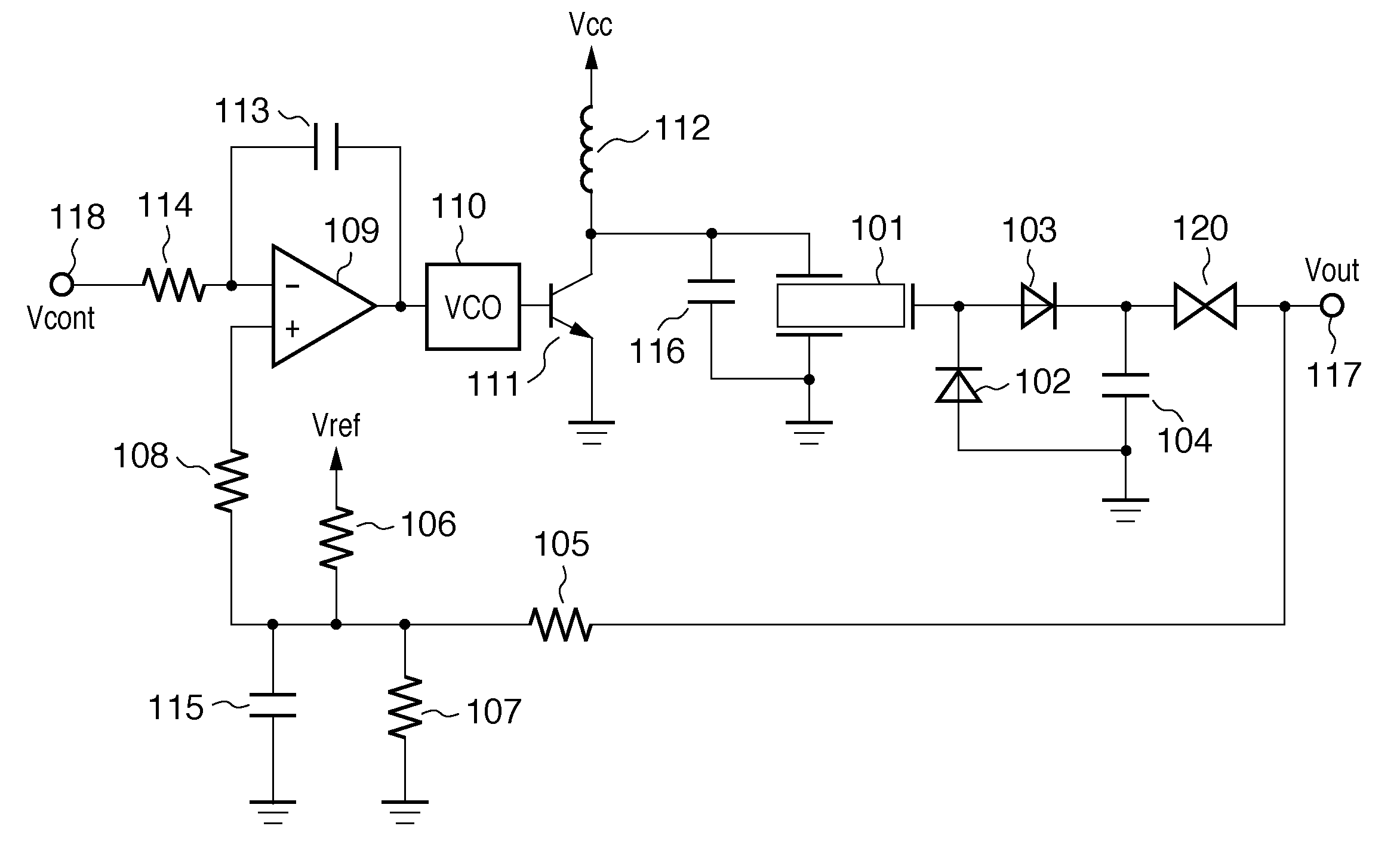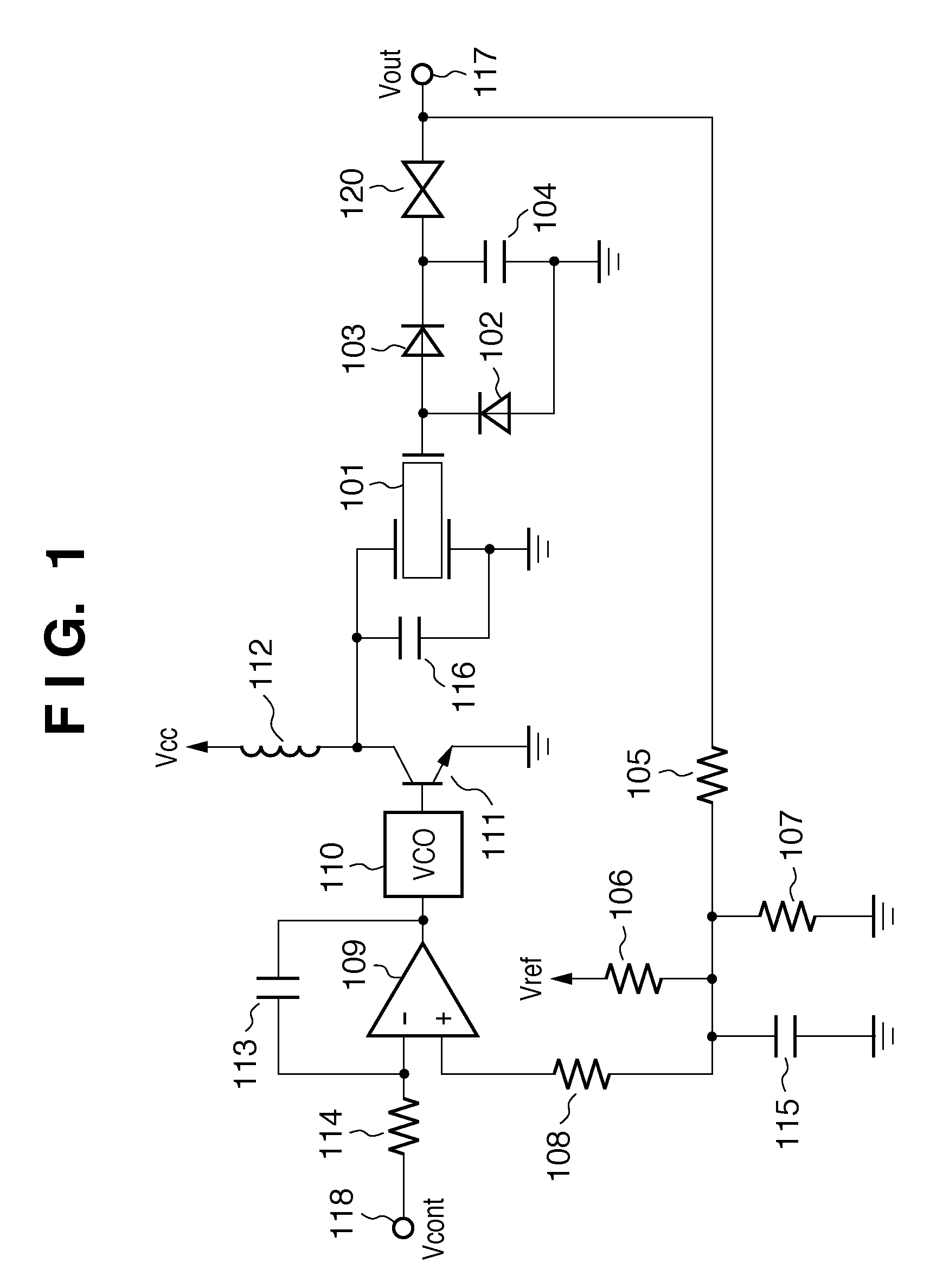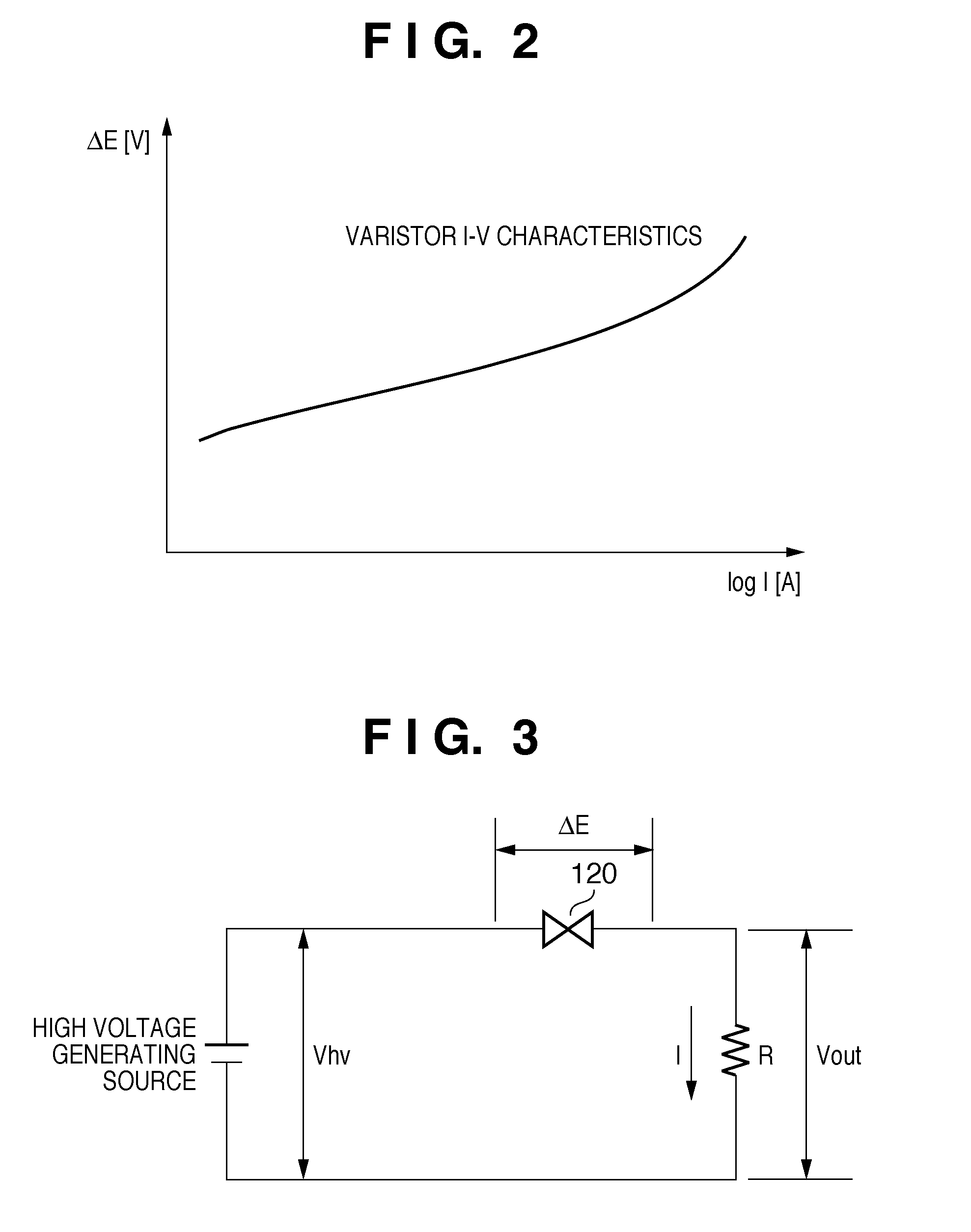High-voltage power supply apparatus and image forming apparatus employing same
- Summary
- Abstract
- Description
- Claims
- Application Information
AI Technical Summary
Benefits of technology
Problems solved by technology
Method used
Image
Examples
embodiment 1
[0059]FIG. 1 is a circuit diagram that shows an example of a piezoelectric transformer type high-voltage power supply apparatus according to Embodiment 1. Note that the description is shortened by giving the same reference numerals to previously described locations. Also, the invention is effective for a high-voltage power supply apparatus that outputs either positive voltage or negative voltage. Here, as one example, a high-voltage power supply apparatus that outputs positive voltage will be described.
[0060]A piezoelectric transformer 101 outputs a highest voltage at a predetermined resonance frequency. A voltage-controlled oscillator 110, a field-effect transistor 111, an inductor 112, and a capacitor 116 are an example of a generating unit that generates a drive frequency (a signal that oscillates at the drive frequency) for driving the piezoelectric transformer 101 throughout a predetermined frequency range that includes the resonance frequency. Ordinarily, frequency refers to t...
embodiment 2
[0103]Below, Embodiment 2 of the invention will be described based on FIGS. 6, 7, and 8. However, a description of matters described in Embodiment 1 will be omitted here.
[0104]FIG. 6 is a circuit diagram of a piezoelectric transformer type high-voltage power supply apparatus according to Embodiment 2. Embodiment 2 mainly differs from Embodiment 1 in that a Zener diode 121 is adopted as a constant-voltage element.
[0105]FIG. 7 shows current-voltage characteristics of an ordinary Zener diode 121. The horizontal axis indicates current I (logarithmic). The vertical axis indicates the both-end voltage of the Zener diode 121. As is understood from a comparison of FIG. 7 and FIG. 2, the voltage characteristics of the Zener diode 121 do not depend on the current that flows to the extent of a varistor. Thus, with respect to the both-end voltage ΔE of the Zener diode 121, the Zener voltage is maintained in a wide current range.
[0106]FIG. 8A shows frequency characteristics for a case where a Ze...
embodiment 3
[0110]Below, Embodiment 3 of the invention will be described based on FIGS. 9, 10, and 11. However, a description of matters described in the previous exemplary embodiments will be omitted here. FIG. 9 is a circuit diagram of a piezoelectric transformer type high-voltage power supply apparatus according to Embodiment 3. Embodiment 3 mainly differs from the previous exemplary embodiments in that a varistor 120 is inserted as a constant-voltage element, and a resistor 122 is further connected in parallel relative to the varistor 120.
[0111]FIG. 10 shows current-voltage characteristics when the varistor 120 and a resistor 122 are connected in parallel. The horizontal axis indicates the current I (logarithmic). The vertical axis indicates the both end voltage of the varistor. As features of this exemplary embodiment, I-V characteristics of the resistor in a region where current is small are dominant, and I-V characteristics of the varistor in a region where current is large are dominant....
PUM
 Login to View More
Login to View More Abstract
Description
Claims
Application Information
 Login to View More
Login to View More - R&D
- Intellectual Property
- Life Sciences
- Materials
- Tech Scout
- Unparalleled Data Quality
- Higher Quality Content
- 60% Fewer Hallucinations
Browse by: Latest US Patents, China's latest patents, Technical Efficacy Thesaurus, Application Domain, Technology Topic, Popular Technical Reports.
© 2025 PatSnap. All rights reserved.Legal|Privacy policy|Modern Slavery Act Transparency Statement|Sitemap|About US| Contact US: help@patsnap.com



